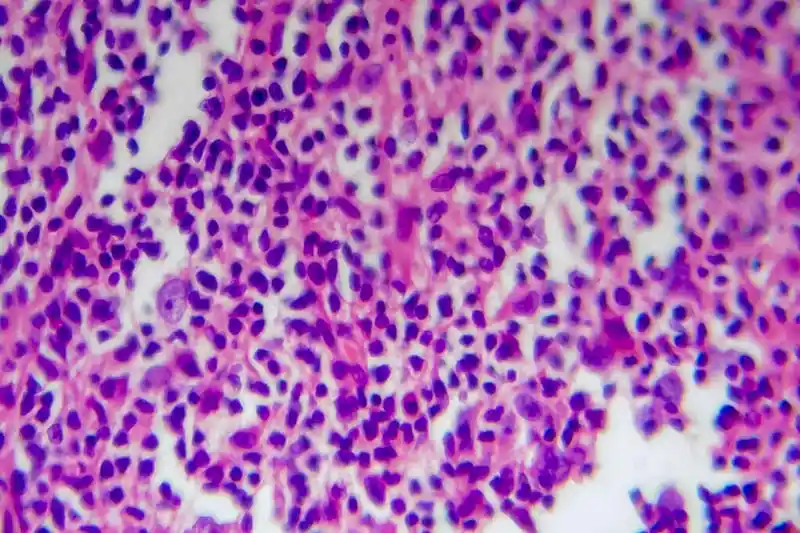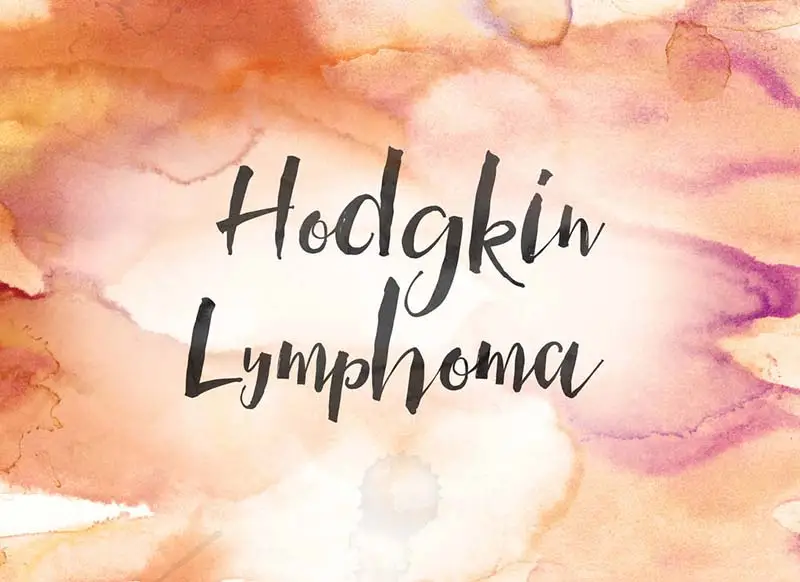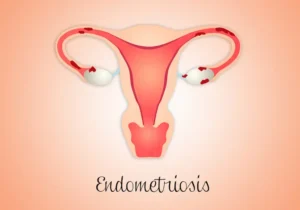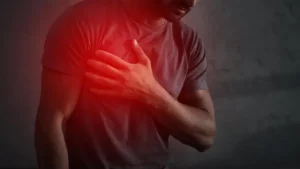What Is Hodgkin Lymphoma?
Hodgkin lymphoma is a form of cancer that begins in the cells of the immune system. These white blood cells protect us against infection and disease. When Hodgkin lymphoma starts, some of these immune system cells become abnormal. They grow out of control and multiply very quickly. As they multiply, they crowd out healthy tissue.
The most common symptoms include fever, night sweats, weight loss, swollen glands, bone pain, fatigue, and coughing up mucus.
There are two main kinds of Hodgkin lymphoma: classical Hodgkin lymphoma (CHL) and lymphocyte predominant Hodgkin lymphoma (LPHL). CHL makes up 95% of all Hodgkin lymphomas, whereas LPHL makes up just 5%.
Classical Hodgkin Lymphoma (CHL)
This type of Hodgkin lymphoma usually affects young people between 15-35 years old. The cause of CHL is unknown but it may be linked to genetics or exposure to certain viruses such as Epstein Barr virus.
It can affect any part of your body including your neck, chest, abdomen, groin, back, arms, legs and even your head.
It often presents with one or more of the following symptoms:
- Fever.
- Weight loss.
- Night sweats.
- Swollen glands.
- Bone pain.
- Fatigue.
- Coughing up mucus.
- Enlarged lymph nodes.
- Skin rash.
- Abdominal masses.
- Neck lump.
Lymphocyte Predominant Hodgkin Lymphoma(LPHL)
This type of HL occurs mostly in older adults over 40 years old. It tends to occur in people who have been exposed to EBV before their 20s. This means that you were likely infected by this virus when you were younger.
Symptoms of LPHL tend to be milder than those of CHL. However, there are still many possible symptoms that could indicate this type of Hodgkin lymphoma, including:
- Fever.
- Night sweats.
- Weight loss.
- Swelling of the face, tongue, throat, jaw or neck.
- Difficulty swallowing.
- Sore throat.
- Hoarseness.
- Headaches.
- Chest pains.
- Shortness of breath.
- Abdominal mass.
- Back pain.
- Belly pain.
- Enlarged.
The Lymphatic System
Lymphatics are part of the circulatory system, which transports oxygenated blood around the body. They drain excess fluids away from tissues to maintain good health.
They are involved in the transport of white blood cells and proteins, including antibodies, hormones and enzymes.
Lymphatic tissue helps regulate body temperature and plays a role in immunity.
The lymphatic system consists of the lymphoid organs, such as the thymus and tonsils, and the lymphatic vessels carrying lymph fluid throughout the body.
There are three types of lymphatic vessels: capillaries, veins and collecting ducts. Capillary circulation delivers nutrients to the tissues and removes waste products. Veins carry deoxygenated blood to the heart. Collecting ducts collect lymph fluid from the tissues and return it to the bloodstream via veins.
In addition to transporting lymphocytes, lymphatic vessels also help maintain healthy skin and hair. The lymphatic system drains fluid from the interstitial spaces of the connective tissue, helping keep the skin smooth and supple.
A swollen lymph node indicates inflammation, infection or malignancy. A lumpy swelling in the breast could indicate breast cancer. Swelling in the throat or under the arms could mean you have laryngitis or mononucleosis.

Several Treatment Options Available for Patients
Treatment for both types of Hodgkin lymphoma depends on the stage of the disease. In general, treatment options include chemotherapy, radiation therapy, surgery and immunotherapy.
Chemotherapy
Chemotherapy uses drugs to kill cancer cells. Chemotherapeutic agents work by damaging DNA inside cancer cells, causing them to stop dividing and die.
Some chemotherapies can cause side effects like nausea, vomiting, diarrhea, mouth sores, hair loss, fatigue and weight gain.
Radiation Therapy
Radiation therapy is used to destroy cancer cells. Radiation kills cancer cells by damaging their DNA. This therapy may be given alone or combined with other treatments.
Surgery
Surgery involves removing tumors or diseased tissue. If necessary, doctors will remove lymph nodes along with the tumor.
Immunotherapy
Immunotherapy is an experimental form of treatment. It works by stimulating your immune system to fight off cancer cells. It’s not yet known whether immunotherapy is effective against Hodgkin lymphoma.
If you think you might have this type of lymphoma, talk to your doctor about your options.
Causes
Lymphomas are cancers that start in the lymphatic system, which includes the lymph nodes and spleen. They’re usually caused by viruses or bacteria. They make antibodies to protect against bacteria and viruses.
In most cases, doctors don’t know what triggers the abnormal growth of these cells. But research suggests that some types of infection, including glandular fever, measles, chickenpox, mumps and shingles, might trigger the disease.
Poor immunity could also increase the risk of getting Hodgkin lymphoma. This happens because the body’s defences are weakened during periods of illness or stress. Very rarely, more than one person in a family gets the disease; you cannot catch it from anyone else.
Symptoms
The symptoms of Hodgkin lymphoma depend on where the cancer has spread. Symptoms usually begin slowly and worsen over time.
Early signs of Hodgkin lymphoma include:
- Painless enlarged lymph nodes (lumps) in the neck, armpits, groin, abdomen or chest.
- Fever.
- Night sweats.
- Tiredness and weakness.
- Weight loss, especially if accompanied by poor appetite..
- Cough.
- Shortness of breath.
- Sore throat.
- Headache.
- Jaw pain.
- Rash.
- Itching.
- Jaundice and pale skin.
- Dark urine.
- Light-colored stools.
- Abdominal bloating.
- Backache.
- Difficulty swallowing.
- Numbness or tingling in hands or feet.
- Unexplained bleeding from any part of the body.
- Changes in bowel habits such as constipation, diarrhoea, stomach cramps, gas or feeling full quickly after eating small amounts of food.
- Swollen glands in the neck, underarms, groin or axillae (armpits).
- A lump or swelling in the breast or testicles.
- Skin changes such as red spots, blisters, rashes, bumps or warts.
- Sore throats, swollen salivary glands, hoarseness, coughing up blood, trouble breathing through the nose or mouth, and/or a change in voice quality.
How It’s Diagnosed
Your doctor can diagnose Hodgkin lymphoma based on its symptoms and medical history. He or she will ask questions about your health and lifestyle. A physical exam will be done. Your doctor may order tests to find out if there is any sign of inflammation or infection.
Blood tests may show high levels of proteins in the blood. The protein level may indicate how much cancer is present.
Imaging tests, such as X-rays or CT scans, may be used to look for evidence of the disease.
Bone marrow biopsy may be needed to confirm the diagnosis. This involves taking bone marrow samples from your hip bones.
Other Tests
Doctors use different tests to determine which treatment is best for you. Some tests may be done before treatment begins. Others may be done while you’re receiving treatment.
Biopsy — A sample of tissue is removed from an area of the body affected by the cancer. Tissue samples are sent to a laboratory for testing.
Liver function tests — These help check liver function. Liver problems can affect chemotherapy effectiveness.
Chemotherapy — Chemotherapy uses drugs to kill cancer cells. Drugs may be given by injection into a vein or taken orally.
Radiotherapy — Radiotherapy uses high-energy radiation to kill cancerous tissue. It may be used alone or in conjunction with chemotherapy.
Immunotherapy — Immunotherapy uses immune system agents to fight cancer. They may be injected directly into the bloodstream or given by infusion into a vein.
Bone Marrow Transplantation — If your bone marrow stops producing white blood cells, then doctors transplant healthy donor stem cells into your bone marrow. Stem cell transplants require very strong medicines that suppress the immune system.
Surgery — Surgery removes all or parts of the tumor. Doctors remove tumors using either open surgery or minimally invasive techniques.
Side Effects of Treatment
Treatment side effects vary depending on the type of treatment you receive. Side effects depend on:
- The stage of the disease at the time of treatment.
- Whether you have had previous treatments.
- What kind of chemotherapy you receive.
- The amount of radiation you receive.
- Your age.
- Your overall health.
Some side effects last only a short time. Other side effects may take longer to go away. Talk to your doctor about what side effects are most likely to occur during your treatment. You may need to try several different types of treatment before finding one that works well for you.
Some side effects may get better over time. But others may not improve. Ask your doctor about other ways to relieve side effects.
Outlook
Hodgkin lymphoma has a good outlook when treated early. Most people who have this condition live long lives. However, some people die of their disease.
This article doesn’t replace medical advice from doctors. You should always seek your own medical advice.





